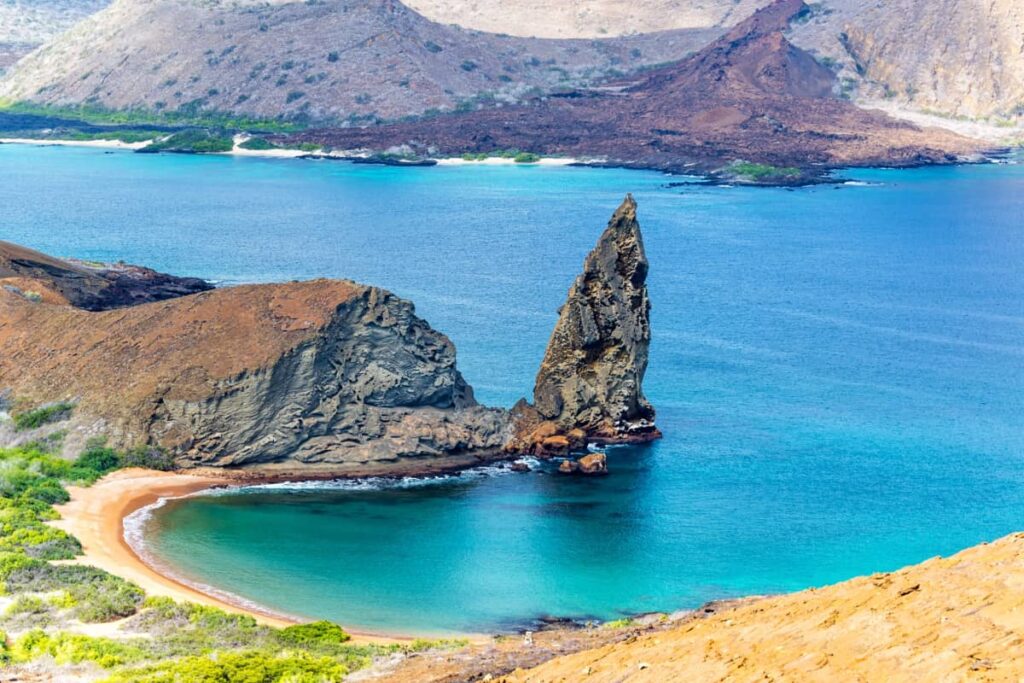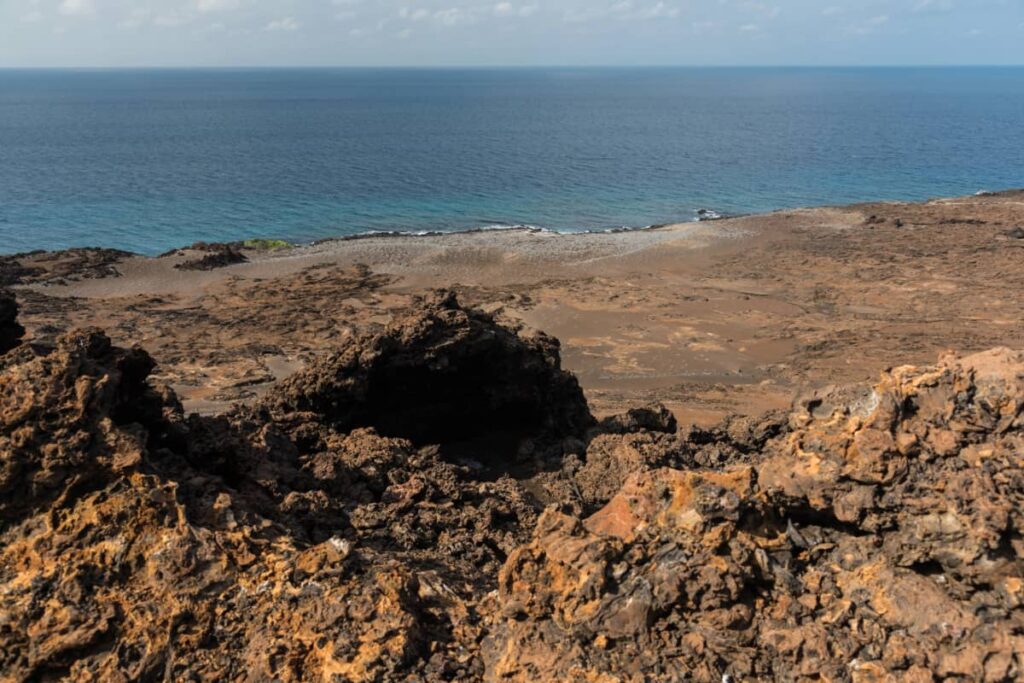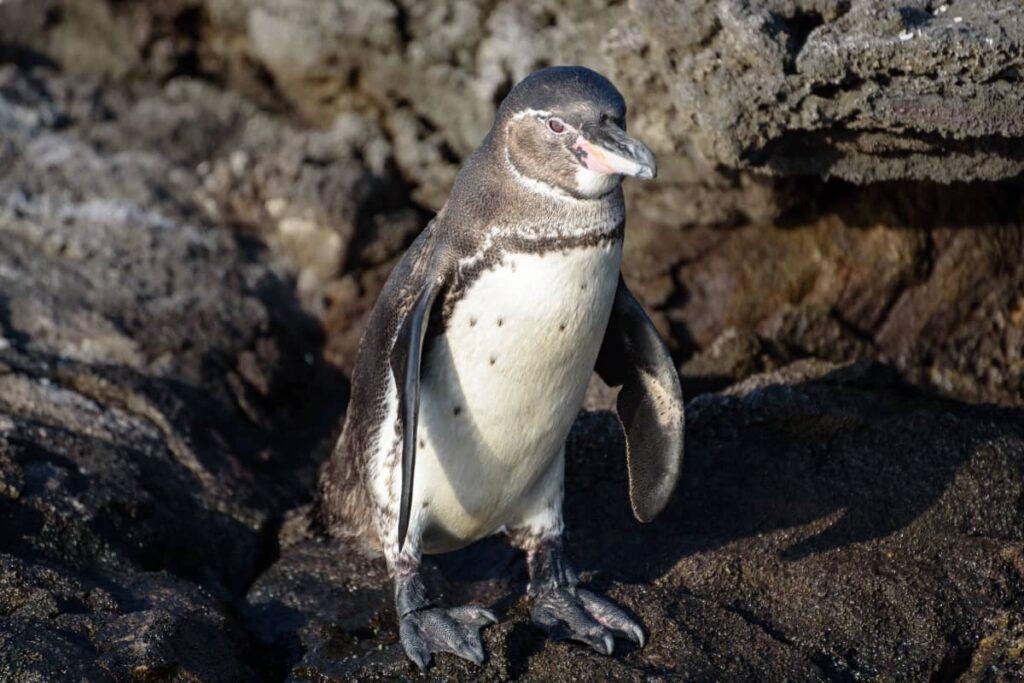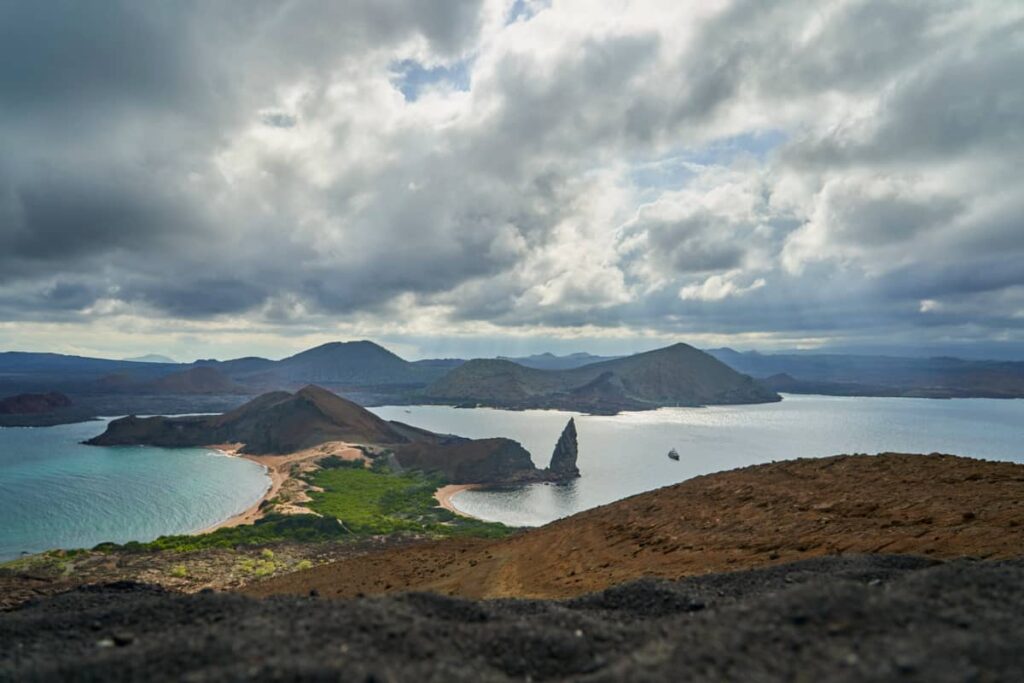Bartolome Island Galapagos: Ultimate Travel Guide
Bartolome Island, part of the Galapagos archipelago, is a volcanic wonderland famed for its iconic Pinnacle Rock, diverse wildlife, and otherworldly landscapes. Visitors can snorkel with penguins, hike volcanic trails, and witness UNESCO-backed conservation efforts. This guide covers everything from must-see attractions to practical travel tips for exploring one of the Galapagos’ most unique destinations.
Bartolome Fast Facts
- Youngest Island: Formed 1.5 million years ago by volcanic activity.
- Pinnacle Rock: A 114-meter(374ft) tuff cone housing the Galapagos penguin colony.
- Protected Ecosystem: Managed by Galapagos National Park with no permanent residents.
- UNESCO World Heritage Site: Recognized for its ecological significance.
- Accessible by Day Tour: Most visitors arrive via cruises or island-hopping tours from Santa Cruz.
Bartolome Activity Highlights
- Hike the Summit Trail: Climb 372 steps for panoramic views of Pinnacle Rock and Sullivan Bay.
- Snorkel with Penguins: Swim alongside Galapagos penguins and reef sharks near Pinnacle Rock.
- Kayak Sullivan Bay: Paddle through lava-formed coves and spot marine iguanas.
- Photography Tours: Capture sunrise at Pinnacle Rock or starry lava fields at night.
- Birdwatching: Watch for Galapagos Penguins, herons, and Galapagos Hawks.
- Conservation Volunteering: Join habitat restoration projects or wildlife monitoring.
Bartolome Animal Highlights
- Galapagos Penguins: The only penguin species north of the equator.
- Marine Iguanas: Unique lizards that feed on underwater algae.
- Blue-Footed Boobies: Birds famous for their bright feet and quirky dances.
- Green Sea Turtles: Frequently spotted grazing in seagrass beds.
- White-Tipped Reef Sharks: Harmless sharks resting on sandy ocean floors.
- Lava Lizards: Tiny reptiles darting across volcanic rocks.

History
Bartolome’s history is shaped by volcanic eruptions that created its jagged terrain. Named after British naturalist Sir Bartholomew James Sullivan, the island played a role in 19th-century exploration. Today, its protected status under Galapagos National Park (established 1959) and UNESCO ensures the survival of its fragile ecosystems.
Geography
- Area: 1.2 km² (0.46 mi²), one of the smallest Galapagos islands.
- Elevation: 114 meters (374 ft) at its highest point.
- Key Feature: Sullivan Bay’s vast pahoehoe lava fields.
Getting there:
Bartolome has no airport. Visitors fly to Baltra (GPS) or San Cristóbal (SCY), then take ferries or cruises. Daily flights connect Ecuador’s mainland cities Quito and Guayaquil to the Galapagos Islands.
Visit Bartolome Island:
Choose between multi-day Galapagos cruises or day tours from Santa Cruz. Most tours include snorkeling gear, guides, and permits (contact us for details).

Conservation Challenges
Invasive species like rats and feral cats prey on endemic wildlife, including the endangered Galápagos penguin, while climate change intensifies El Niño events, disrupting marine ecosystems and bleaching coral reefs. Tourism, though vital for funding conservation, risks habitat degradation through trail erosion, plastic pollution, and stress to wildlife. Plastic waste further endangers marine species, with microplastics infiltrating coastal waters and threatening biodiversity.
Conservation efforts focus on adaptive strategies: invasive species eradication, marine reserve expansions like the Hermandad Reserve, and strict tourism regulations (e.g., trail restrictions and plastic bans). Coral reef monitoring and disease research aim to safeguard penguins and marine life. By balancing ecotourism with ecological preservation, Bartolomé serves as a model for sustainable conservation, emphasizing collaboration between researchers, policymakers, and visitors to protect its irreplaceable ecosystems.
Economy
As with most of the islands, tourism fuels Bartolome’s economy, with nearly all revenue coming from guided tours and cruises. Limited artisanal fishing is permitted, but most locals work in conservation or hospitality.
Climate
Bartolome has two seasons: a cool, dry season (June–November) ideal for hiking, and a warm, wet season (December–May) perfect for snorkeling. Water temperatures range from 18°C (64°F) to 28°C (82°F).

Activities & Experiences
- Snorkeling with Galapagos Penguins (Spheniscus mendiculus): Swim alongside the endangered penguins, reef sharks, and sea turtles near Pinnacle Rock.
- Hiking the Summit Trail: Ascend the wooden staircase for panoramic views of Sullivan Bay’s lava fields.
- Kayaking Sullivan Bay: Glide past lava formations and spot marine iguanas (Amblyrhynchus cristatus) basking on rocks.
- Photography Tours of Pinnacle Rock: Capture the iconic landmark at sunset or under starry skies.
- Birdwatching for Blue-Footed Boobies (Sula nebouxii): Observe their comical mating rituals on nearby Santiago Island.
- Exploring Playa Dorada: Snorkel in the golden sands to spot golden rays (Rhinoptera steindachneri).
- Conservation Volunteering: Assist in habitat restoration or sea turtle monitoring (Chelonia mydas).
- Glass-Bottom Boat Tours: Discover coral gardens and white-tipped reef sharks (Triaenodon obesus) without getting wet.
- Scuba Diving at Cousin’s Rock: Advanced dives with hammerhead sharks (Sphyrna lewini) and eagle rays (Aetobatus laticeps).
- Sunset Cruises: Sip cocktails while watching frigatebirds (Fregata magnificens) soar past Pinnacle Rock.
- Guided Lava Walks: Learn about volcanic geology while traversing Sullivan Bay’s pahoehoe flows.
- Whale Watching (June–October): Spot humpback whales (Megaptera novaeangliae) during migration season.
- Snorkeling with Sea Lions (Zalophus wollebaeki): Playful pups often twirl around snorkelers.
- Visiting the Research Station: Learn about penguin conservation and lava lizard (Microlophus albemarlensis) studies.

Animal Encounters
Mammals
- Galapagos Sea Lion (Zalophus wollebaeki): Curious and vocal, often seen lounging on beaches.
- Bottlenose Dolphin (Tursiops truncatus): Playful pods frequently breach near tour boats.
Reptiles
- Marine Iguana (Amblyrhynchus cristatus): The world’s only seafaring iguana, often sneezing salt.
- Galapagos Giant Tortoise (Chelonoidis nigra): Occasionally spotted grazing in highland zones.
- Lava Lizard (Microlophus albemarlensis): Tiny reptiles displaying territorial push-up displays.
Birds
- Galapagos Penguin (Spheniscus mendiculus): Endangered species nesting in lava tubes.
- Blue-Footed Booby (Sula nebouxii): Males showcase bright feet during courtship dances.
- Great Frigatebird (Fregata magnificens): Males inflate scarlet throat pouches to attract mates.
- Galapagos Hawk (Buteo galapagoensis): Apex predator soaring above the island’s summit.
- Swallow-Tailed Gull (Creagrus furcatus): Nocturnal birds with striking red eye-rings.
Fish & Underwater Life
- White-Tipped Reef Shark (Triaenodon obesus): Docile sharks resting on sandy bottoms.
- Green Sea Turtle (Chelonia mydas): Ancient grazers in seagrass beds near Playa Dorada.
- Golden Ray (Rhinoptera steindachneri): Glide in synchronized schools near the surface.
- King Angelfish (Holacanthus passer): Vibrant reef dwellers with electric-blue markings.
- Scalloped Hammerhead Shark (Sphyrna lewini): Massive schools pass the island in December.

Travel Tips and Practical Information
- Book tours in advance during peak season (June–August).
- Pack reef-safe sunscreen and waterproof hiking shoes.
- Strictly follow the National Park rules (no littering, no feeding wildlife, etc.)
- USD is Ecuador’s currency; cash is essential for tips.
- Take motion sickness medication beforehand; the approximate 2-hour navigation from Santa Cruz can be choppy. .
Ready to explore Bartolome? Book your Galapagos cruise or land-based tour today for an unforgettable adventure!

